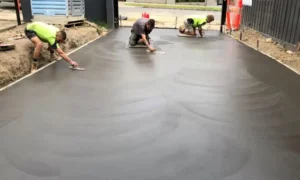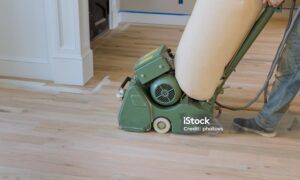Concrete is an incredibly versatile material, used in many aspects of construction and architecture. It offers both strength and durability, while also being affordable and environmentally friendly. In this article, we will explore the various uses of concrete, as well as some tips and tricks for working with this essential building material.
Concrete in Construction
One of the primary uses of concrete is in construction, especially for the creation of buildings, bridges, and other structures. The materials incredible strength and durability make it ideal for supporting heavy loads and withstanding the test of time. In addition, concrete is an excellent option when looking to construct buildings that are resistant to fire and other natural disasters.
Decorative Concrete Options
While concrete is often thought of as a purely functional material, it can also be used to create beautiful and unique designs. Decades ago, the idea of decorative concrete may have seemed far-fetched, but today, its a reality thanks to advances in technology and techniques. Stamped concrete, for example, can mimic the appearance of more expensive materials like brick, stone, or even wood, while acid staining can give concrete floors a plethora of colors and patterns.
Concrete in Landscape Design
Another popular use for concrete is in landscape design. Concrete can be used to create durable and attractive walkways, patios, retaining walls, and other outdoor elements. It can be easily molded and shaped to create unique and interesting designs, providing a functional and aesthetically pleasing addition to any landscape. In addition, its low-maintenance nature makes concrete or concrete resurfacing an excellent choice for homeowners and landscape professionals alike.
Concrete Home Features
In addition to its use in construction and landscape design, concrete can also be used as a unique feature in home design. Concrete countertops, for example, are becoming increasingly popular for their durability and low maintenance requirements. Moreover, concrete can be used to create sinks, bathtubs, and even furniture. With a little creativity, this versatile material can be incorporated into nearly any aspect of home design.
Smart Concrete Innovations
As technology advances, so too does the world of concrete. Researchers and industry professionals are constantly developing new ways to make concrete even more functional and efficient. One such innovation is “smart concrete,” which refers to concrete materials that can self-heal, change color, or even generate electricity. These groundbreaking advancements have the potential to truly revolutionize the way we think about and use concrete in our everyday lives.
Concrete Maintenance and Repair
While concrete is known for its durability, its not immune to wear and tear. Understanding how to properly maintain and repair concrete surfaces is essential to ensuring their longevity. Regularly sealing concrete to protect it from the elements is an important step, as well as addressing any cracks or damage promptly to prevent further degradation. By following these simple steps, you can ensure that your concrete surfaces remain functional and attractive for years to come.
Environmental Benefits of Concrete
Concrete often gets a bad rap when it comes to environmental concerns, but in reality, it can be a very eco-friendly building material. One major advantage of concrete is its ability to absorb and store heat, helping to stabilize interior temperatures and reduce energy consumption in buildings. Moreover, the material itself is made from abundant and easily sourced raw materials, such as limestone and sand. In fact, many concrete mixes now include recycled materials, such as fly ash and slag cement, further reducing its environmental impact.
Conclusion
From its use in construction to its role as a stunning design element, concrete is truly a versatile and essential part of modern day architecture and landscaping. Its durability, affordability, and environmental friendliness make it an ideal choice for a wide range of applications. Whether youre a homeowner looking to add a unique touch to your space or a professional in the construction industry, understanding the many uses and benefits of concrete is sure to enhance your projects and designs.



































